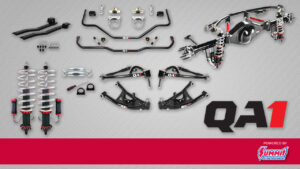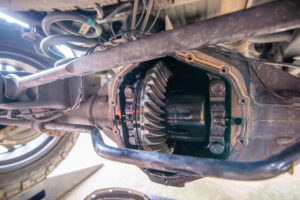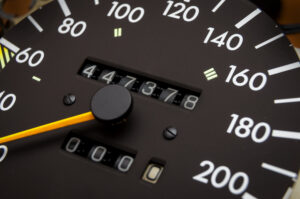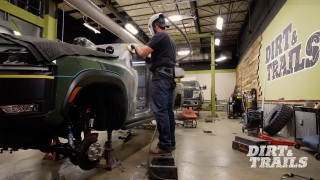Finding Caster, Camber, And Toe
Whether you’re behind the wheel of your daily driver or a drag car, front end geometry is important to ensure the car handles correctly. If it’s not, the vehicle will pull to one side or will pull hard during braking causing the vehicle to lose control. Steering during hard acceleration can be affected as well. Uneven tire wear is also sacrificed when the front-end wheel alignment isn’t correct.
The geometry is made up of three different settings: caster, camber, and toe. They need to be set at the vehicles ride height since the suspension’s travel effects each one.
Caster angle is the forward or backward angle of a line that’s drawn through the steering’s pivots as viewed from the side of a vehicle. It’s expressed in degrees and is measured by the comparison of the line that’s drawn through the steering’s pivots which is usually the upper or lower ball joints, and a line that is drawn perpendicular to the ground. This setting optimizes the self-centering of the steering on a vehicle and reduces the amount force it takes to return the wheels to center.
Camber is simple. It’s how far the tire angles toward or away from the verticle position when looking at the tire from the front of the vehicle. It too is expressed in degrees. When the top of the tire leans outward, or away from the vehicle, that is called positive camber. When the top of the tire leans inwards it is referred to as negative camber. Negative camber increases the grip of the tire during cornering because it puts it at a better angle.
Toe is the direction that the tires are pointed compared to the centerline of the vehicle when viewed from above. It’s usually expressed in fractions of an inch. Toe in means the front of the tires are pointed slightly inwards towards each other and toe out means the opposite. Driving styles and the vehicle’s purpose will all affect what these alignment settings need to be.









